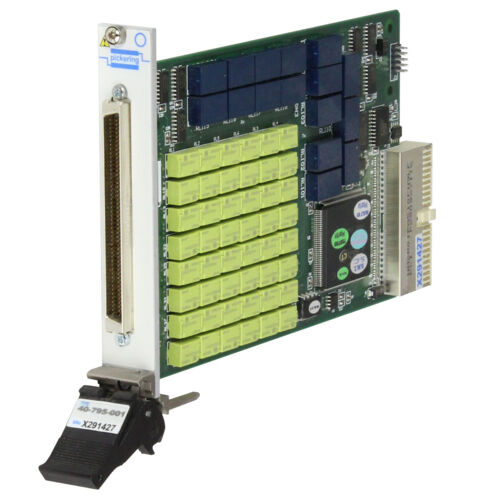Differential & Telecoms PXI Switching Modules
Ideal for switching signals carried as differential signals where a controlled differential impedance is required
- Differential MUX for Switching Serial Data Communications Signals such as USB and Ethernet
- Designed for Switching Signals Carried on Differential Pairs
- Kernel, VISA and IVI Support For PXI Environments & Kernel and IVI Support For LXI Environments
- Select modules are supported by our eBIRST Switching System Test Tools, these tools provide a quick and simple way of finding relay failures within LXI, PCI and PXI switch systems.
Our Differential PXI switches are designed to switch signals carrying serial interfaces such as RS232, USB, Ethernet and CAN Bus. The range includes multiplexers and fault insertion switches. The 40-736 multiplexer is capable of switching Gigabit Ethernet. The 40-201 is capable of performing fault insertion on differential signals up to Gigabit Ethernet speeds.
The Tributary switches are designed for SONET/SDH multiplexer applications at 2MBit/sec or 1.5MBit/s data rates in 75Ω or 120Ω differential systems. They are available with either 8 or 16 tributary channels and incorporate switches that allow data to be fed sequentially through selected tributaries, and multiplexers enable test equipment to break into selected channels.
We also offer mating cables and connectors for these modules to ensure speedy and successful system integration.
We can also design and supply interface adapters for differential switches to connect to application specific connectors.


